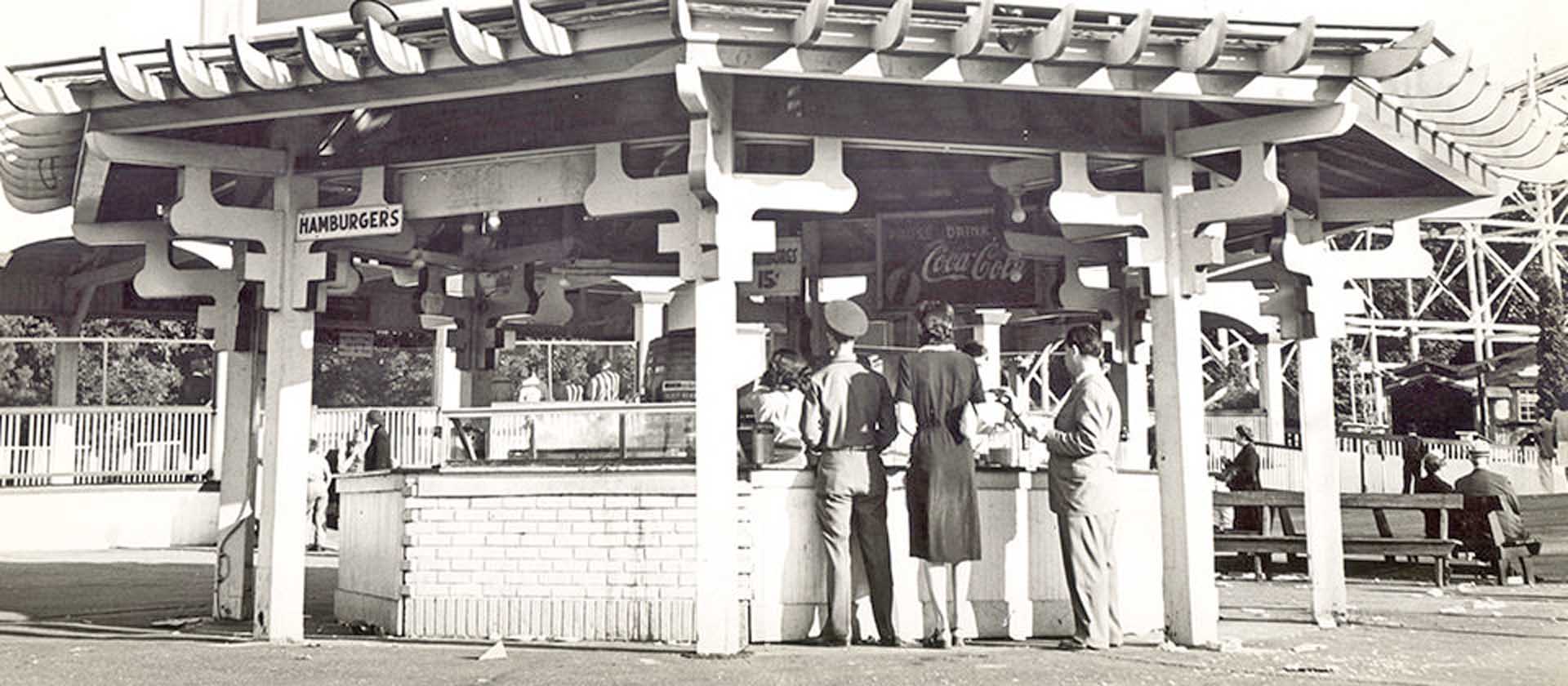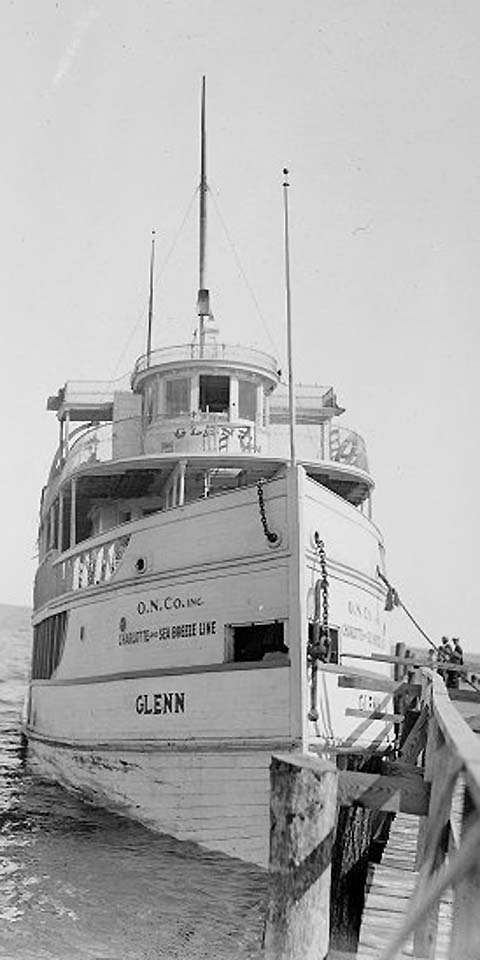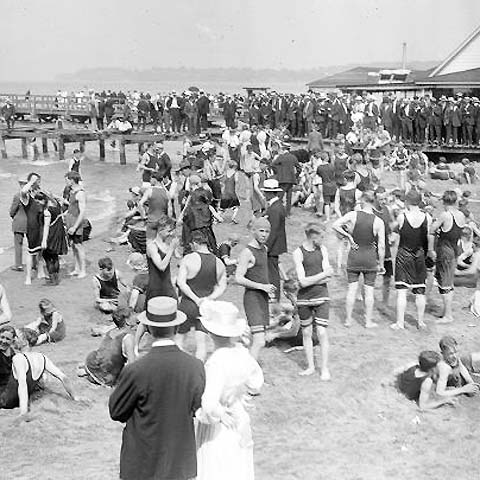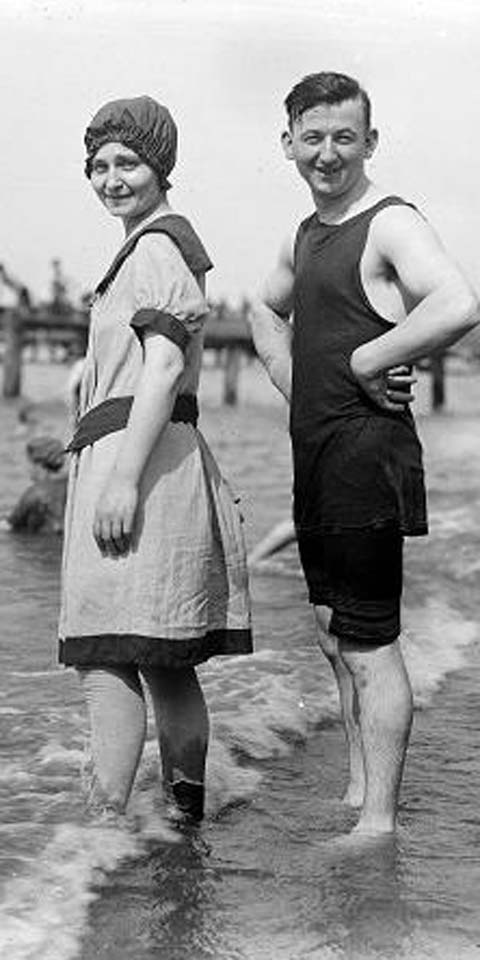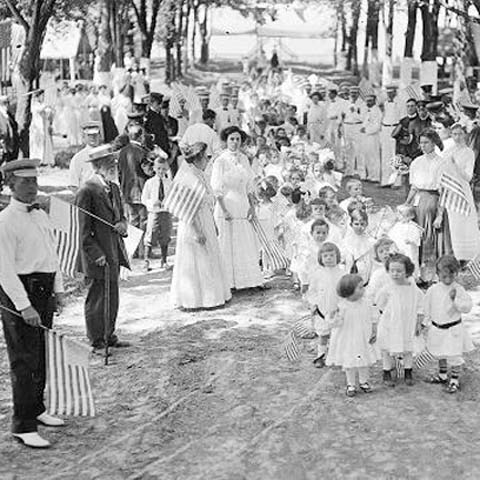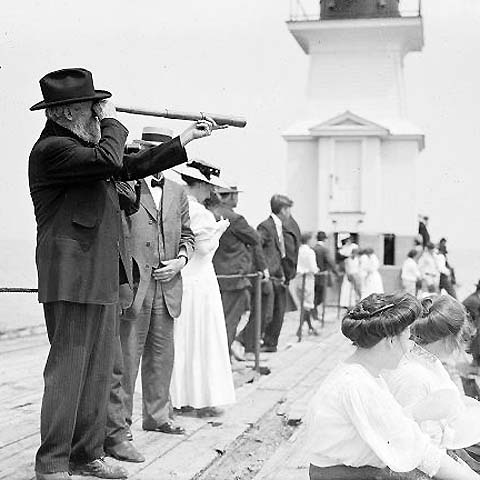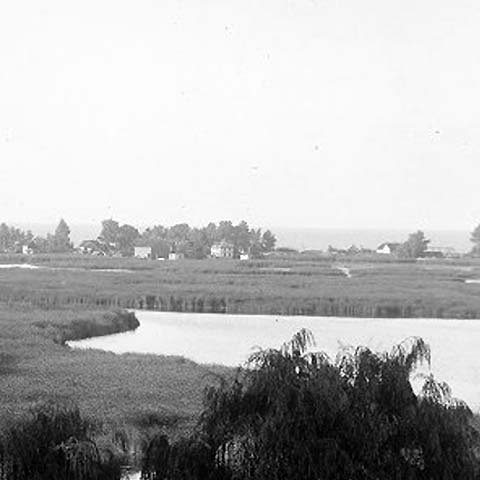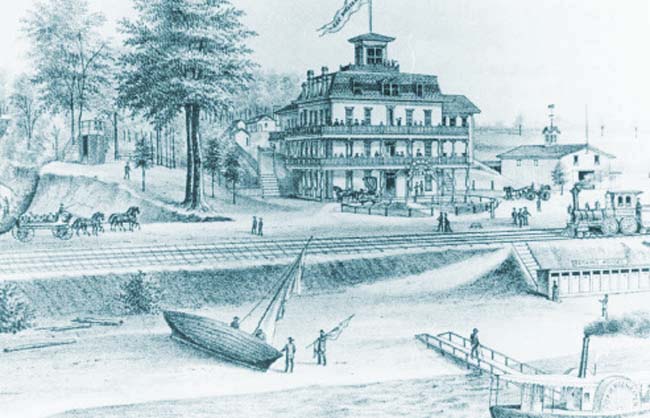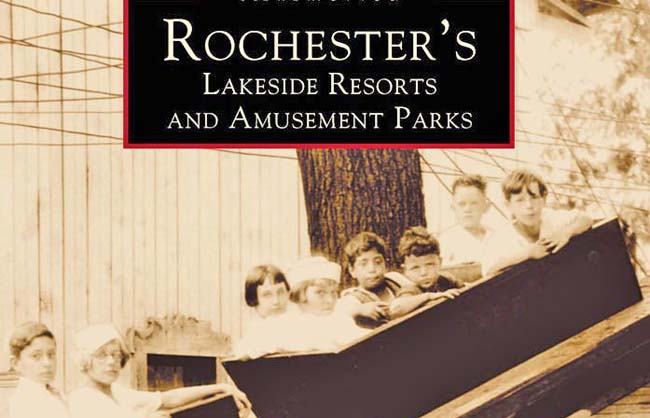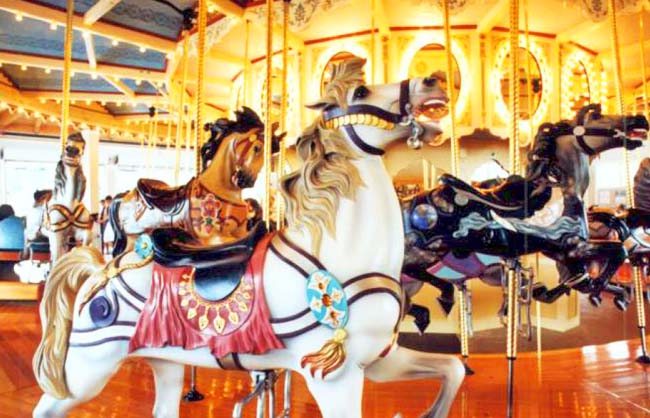Seabreeze History
Location: Irondequoit, New York
The Sea Breeeze community can look back on a short but colorful history. As late as 1837, the only buildings on Irondequoit Bay were a house and saw mill owned by an early settler named Joseph Vinton. The sand bar was uninhabited, with the narrow inlet to the bay serving mainly to impede travel between Irondequoit and Webster. Pleasure for its own sake was viewed with disdain by America's Puritan middle class.
Not that there would have been much time for idle pleasure anyway. Work began at dawn on Monday morning and ended at 9:00 p.m. on Saturday night. It wasn't until 1867 that an eight-hour workday became a reality for many Rochester laborers, followed by half-day Saturdays, during the summer months only, in 1887.
Way to go, Joe
Bay history began in earnest in 1840, the year Joe Vincent converted his saw mill to a gin mill. Originally known as the "Old Steam Saw Mill," and renamed the New-Port House in 1842, it offered food and entertainment. Lodging was provided mainly to avoid being heavily taxed as a saloon. As reported in the Union and Advertiser in 1859, "the host of the New-Port provided for our desires . . . with fishing tackle and all the 'etcetera' of life on the wave." Another article called the house "pleasant and spacious, its larder and bar well filled."
Sea Breeze received a significant boost in 1864, when George Allen bought five acres of land near the outlet where Lake Ontario meets the bay, remodeled the existing home on the property into a three-story hotel, and opened for business as the "Allen House" (later renamed the Sea Breeze House). A privately financed bridge was built over the outlet in 1867 to allow wagons to cross from Webster. No less controversial than the modern swing-bridge that spans the outlet today, it further promoted commercial and recreational development in the area.
But more was needed, and transportation was key. Although steamship travel between Charlotte, Sea Breeze, and the Thousand Islands was popular and well established, the low bridge over the outlet now kept these vessels from entering the bay.
Enter the railroads. Viewed not only as the prime booster for local business, railroads promoted and often subsidized leisure activities at the destinations they served. To quote Florence C. Smith, writing in the Winter 1994 edition of Rochester History: "The first railroad to reach the bay was built in the mid-1870s. It ran along the sandbar at the outlet over the controversial bridge, stopping to load and unload passengers near the Allen Hotel."
Photos below from the Albert R. Stone Negative Collection, Rochester Museum & Science Center Rochester, N.Y.
By 1879, a second railway provided a direct link north and south. It was this second rail line that led to the creation of the Seabreeze amusement park. The company purchased several acres for a station and roundhouse, along with fifty more acres bordering on the shores of the Lake and the Bay, "for the purpose of constructing a summer resort to attract passengers to the Lake." The park eventually extended from its Culver Road entrance to the bay outlet nearly a mile away.
With this new popularity came middle class concerns about intoxication, annoyances, and boisterous behavior at Sea Breeze.
Activities available there included a bowling alley, a beer garden with a brass band, a Punch and Judy show, and a shooting gallery. The Union and Advertiser complained in 1883 that "the element of semi-intoxication is ever present to invite disturbances, and competitive games lend their influence to provoke contention and discord." The article also stated that things were quieter "up the bay."
1900 to 1930 saw great prosperity at Sea Breeze, but following the stock market crash, things got quieter "down the bay" as well. Much quieter. As Florence C. Smith points out, "The Depression is easy to blame for the business collapse, but other factors are also responsible for the reduction of Sea Breeze's popularity. Amusements that appeared in the 1920s contibuted to the decline. Some, like the craze for dancing, were incorporated into the hotel and amusement park facilities around the bay. But others, like motion pictures and the radio, drew visitors away from these resorts. Certainly the widespread ownership of automobiles by the late 1920's opened up new and attractive places to visit."
Florence goes on to say that "not until the 1960's and 70s that brought the Pure Waters program, and the removal of the lakeshore railroad tracks and bridge over the outlet, did leisure-time business at Irondequoit Bay revive. Convenient and private access to the water allowed work and daily living to be closely combined with play for those who could afford it."
